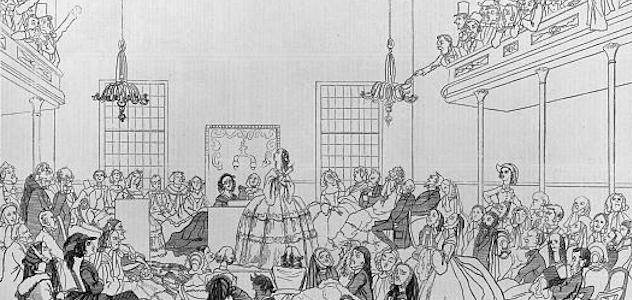Why The Women’s Rights Movement Is Only Getting Bigger
The 1848 Seneca Falls Convention and the 2017 Women’s March may have occurred in two different years, but both mark the growing power of the movement.
The Seneca Falls Convention, held 169 years ago on July 19th and 20th, 1848, catalyzed the future of women’s rights movements. Two hundred women convened in Wesleyan Chapel in Seneca Falls, NY to discuss the grievances brought against women. Led by Elizabeth Cady Stanton and Lucretia Mott, the two women read out The Declaration of Sentiments and Grievances. The document served as the platform for the gathering included topics spanning from political to social rights, focusing in on the right for women to vote.
According to the Declaration, the women proclaimed, “We hold these truths to be self-evident: that all men and women are created equal; that they are endowed by their Creator with certain inalienable rights…” After the convention, future gatherings continued to grow. Two weeks later, a larger meeting was convened in Rochester which set the tone for what women could accomplish.
On January 21, 2017, the Women’s March took place in various cities across the world. The streets were filled with men and women advocating for women’s rights. According to the official Women’s March website, worldwide participation is estimated at five million.
In many ways, the 2017 Women’s March is much different than any gathering ever noted in the women’s rights movement. Yet, when you look closely at the Seneca Falls Convention and the Women’s March, they are both similar. Each movement took off because of the increasing frustration on how women’s rights were not treated as basic human rights.
The Women’s March followed The Unity Principles, a platform that served to educate others on what the march was fighting for. This platform is similar to The Declaration of Sentiments and Grievances. According to the Women’s March Organization, “… The Unity Principles continue to be a guiding light for our movement.” The march attracted large crowds of people, including prominent men and women. On the second day of the Seneca Falls Convention, Frederick Douglass joined to speak about the need for women to procure their rights.
At the march this year, filmmaker Michael Moore and Democratic representative John Lewis came out to show their support. They encouraged women to continue the fight and to not be shy from taking positions of power. Gloria Steinem, Elizabeth Warren and Scarlett Johansson are included in the notable women who came out to show their support as well.
What began as a humble two hundred person gathering evolved into a five million people march that highlighted the growth of the movement. At the start of the women’s rights movement, women fought primarily to secure the right to vote. Now, the movement has expanded to tackle a myriad of issues, from political to reproductive, all in the gain of dismantling oppression. At the start of the movement, only 40 men showed up to the convention to express their support. In 2017, the number of men who showed up tallied to hundreds of thousands. While both gatherings were similar, it is important to understand how the Seneca Falls Convention served as a catalyst. The 2017 Women’s March is a product of the growing strength of the movement that began in 1848.
Give or take the hundreds of years that passed between the two events, the underlying message stays the same. Men and women can be part of a change that revolutionizes the power of women. It’s 2017, but we’re still advocating a cause that’s been around since 1848.
In retrospect, the Seneca Falls Convention and the Women’s March are similar. Their messages are clear and they operate under the guidance of their respective platforms. The evolution of the movement shows the ability for people from diverse backgrounds to come together and fight for their rights. We are in the middle of a movement that will continue to unite people. As time passes, the movement will grow stronger and louder until it becomes a universal fact that women’s rights are human rights.







